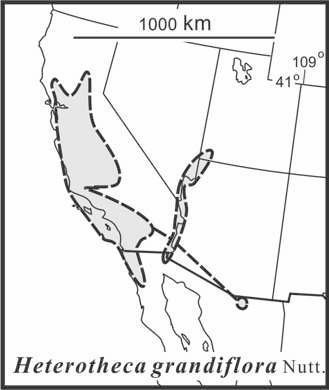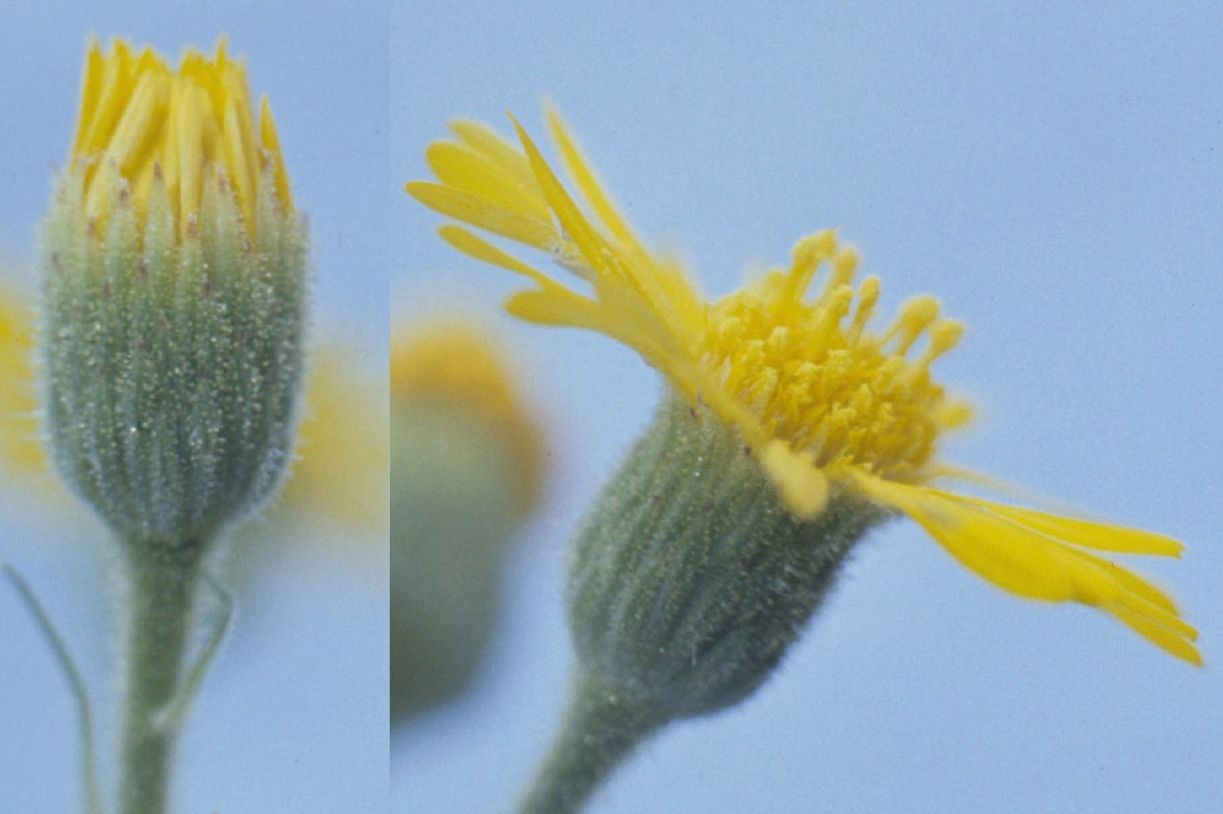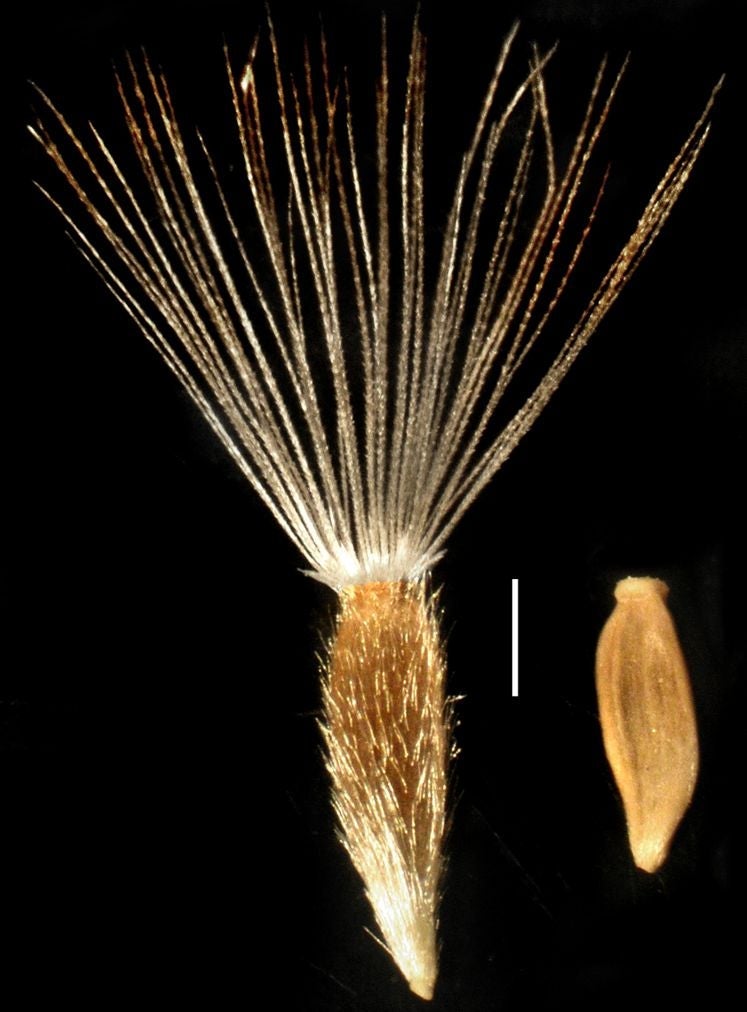
Heterotheca grandiflora Nutt. is native to California and northern Baha California Norte in Mexico and possibly introduced into more eastern areas of the range.The species is an annual with usually erect stems that are more densely leafy (Semple FNA) than those of H. subaxillaris. The leaves are elliptic lanceolate. Ray floret cypselae lack pappus bristles and hairs. Dwarf shoots are similar to much taller shoots but with a more obvious change from petiolate basal stem and rosette leaves to sessile upper stem leaves. Heads from 10–110+, in corymbiform arrays, becoming paniculiform with age, branches ascending, usually relatively short compared to plant height. Sandy and gravelly soils, dunes, disturbed ground, roadsides, vacant lots, fields. The species has been introduced into Hawaii and Australia. The species is diploid (2n=18).
Last revised 20 April 2025 by J.C. Semple
© 2025 J.C. Semple, including all photographs unless otherwise indicated
1-6. Heterotheca grandiflora. 1. Robust plants, Semple et al. 5638, San Luis Obispo Co., California. 2. Tall shoot, Torrey Pines St. Park, California. 3. Dwarf shoot, Sauer & Leskiens 4841 WIS from California. 4. Mid stem leaves, Hasses s.n. MIN. 5. Heads, cultivated, greenhouse U. Waterloo. 6. Ray and disc floret fruite, Semple et al. 5575, California.











